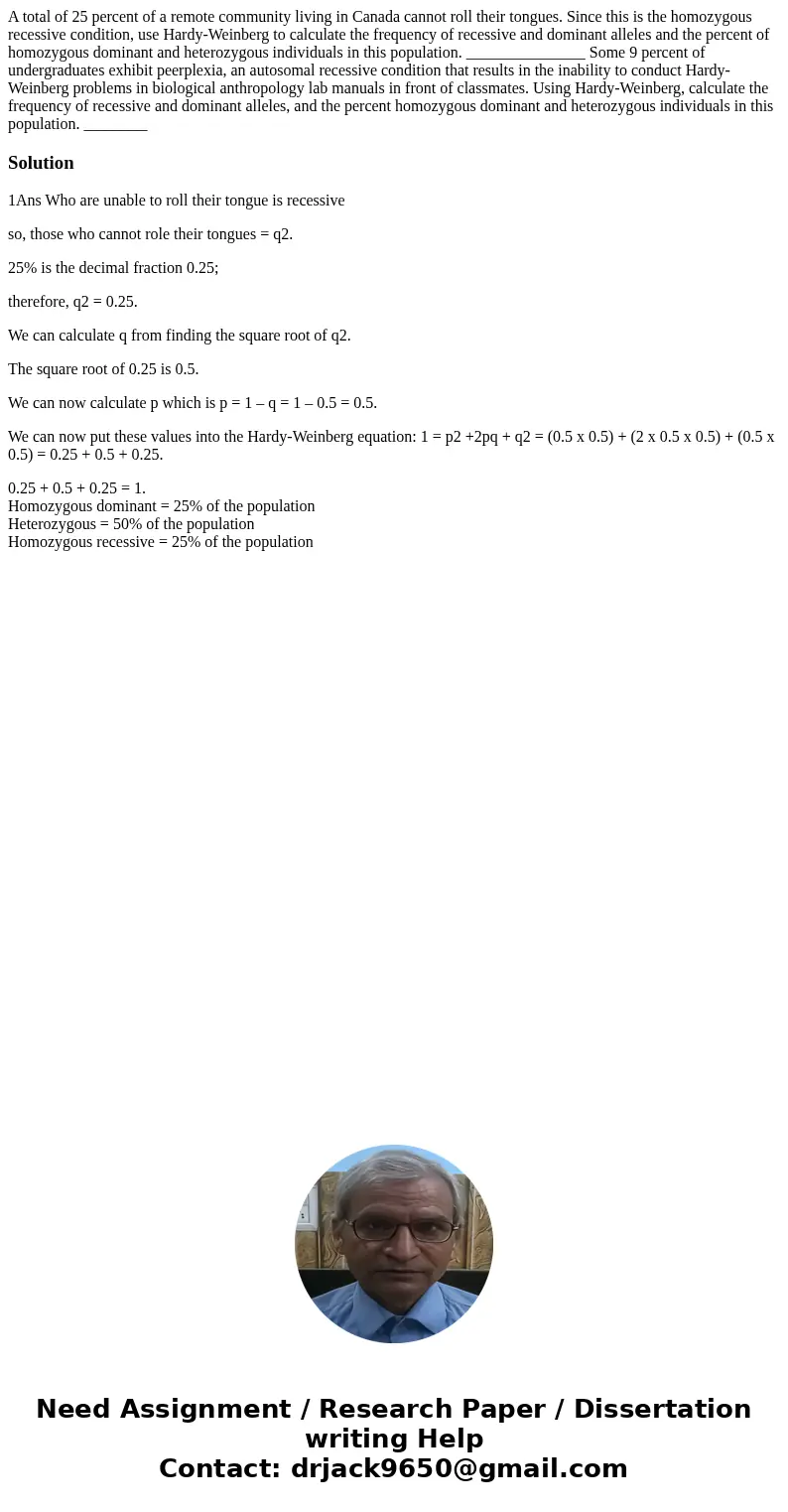A total of 25 percent of a remote community living in Canada
A total of 25 percent of a remote community living in Canada cannot roll their tongues. Since this is the homozygous recessive condition, use Hardy-Weinberg to calculate the frequency of recessive and dominant alleles and the percent of homozygous dominant and heterozygous individuals in this population. _______________ Some 9 percent of undergraduates exhibit peerplexia, an autosomal recessive condition that results in the inability to conduct Hardy-Weinberg problems in biological anthropology lab manuals in front of classmates. Using Hardy-Weinberg, calculate the frequency of recessive and dominant alleles, and the percent homozygous dominant and heterozygous individuals in this population. ________
Solution
1Ans Who are unable to roll their tongue is recessive
so, those who cannot role their tongues = q2.
25% is the decimal fraction 0.25;
therefore, q2 = 0.25.
We can calculate q from finding the square root of q2.
The square root of 0.25 is 0.5.
We can now calculate p which is p = 1 – q = 1 – 0.5 = 0.5.
We can now put these values into the Hardy-Weinberg equation: 1 = p2 +2pq + q2 = (0.5 x 0.5) + (2 x 0.5 x 0.5) + (0.5 x 0.5) = 0.25 + 0.5 + 0.25.
0.25 + 0.5 + 0.25 = 1.
Homozygous dominant = 25% of the population
Heterozygous = 50% of the population
Homozygous recessive = 25% of the population

 Homework Sourse
Homework Sourse